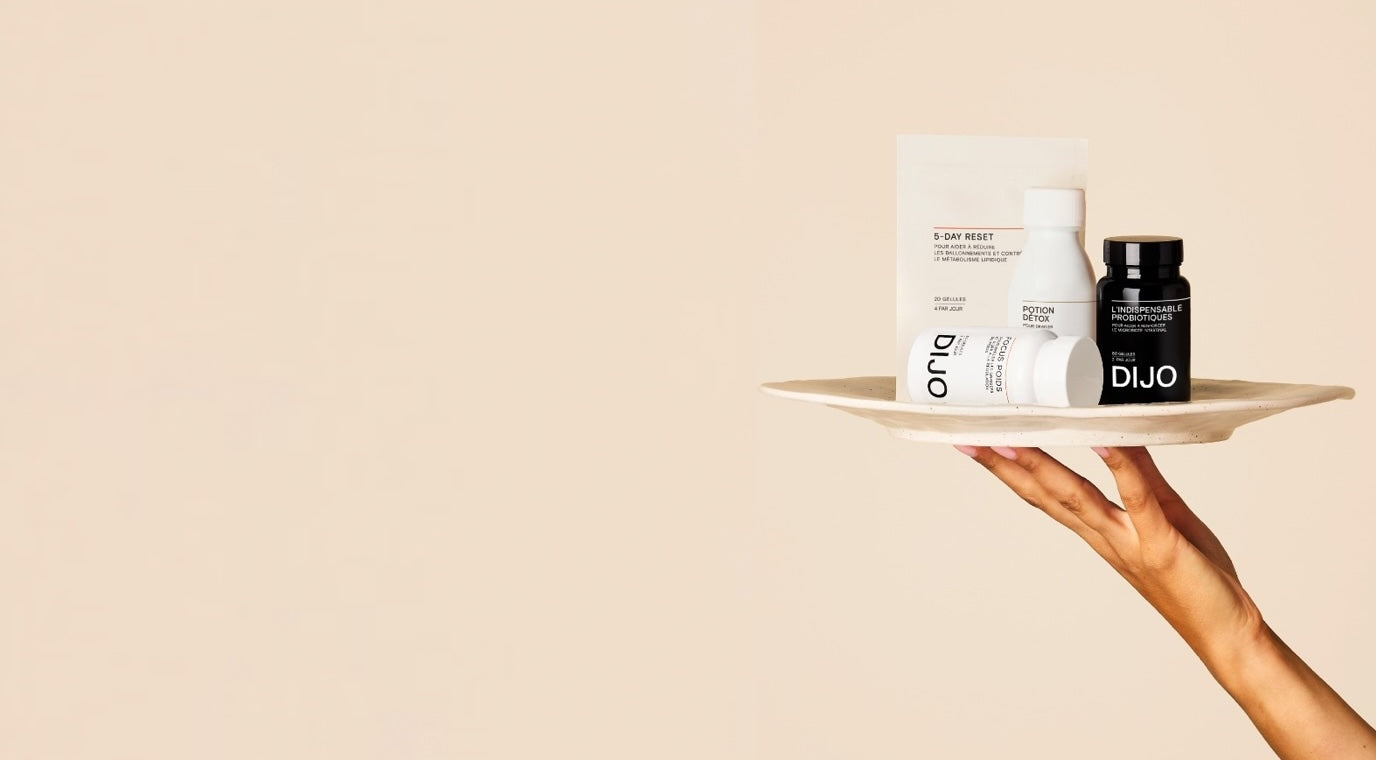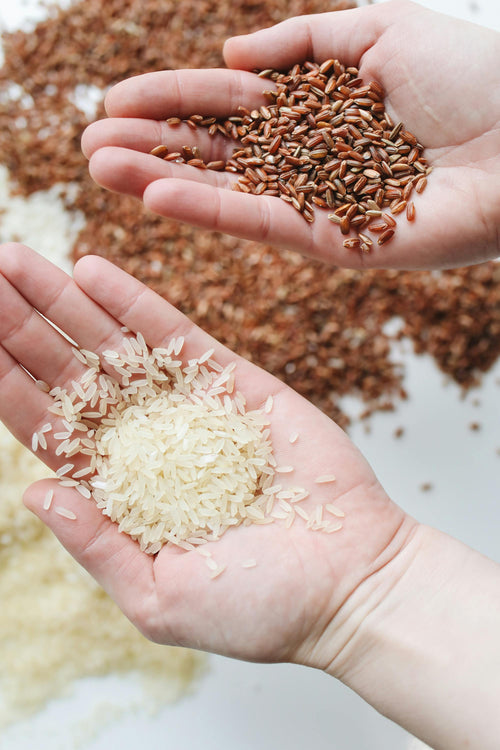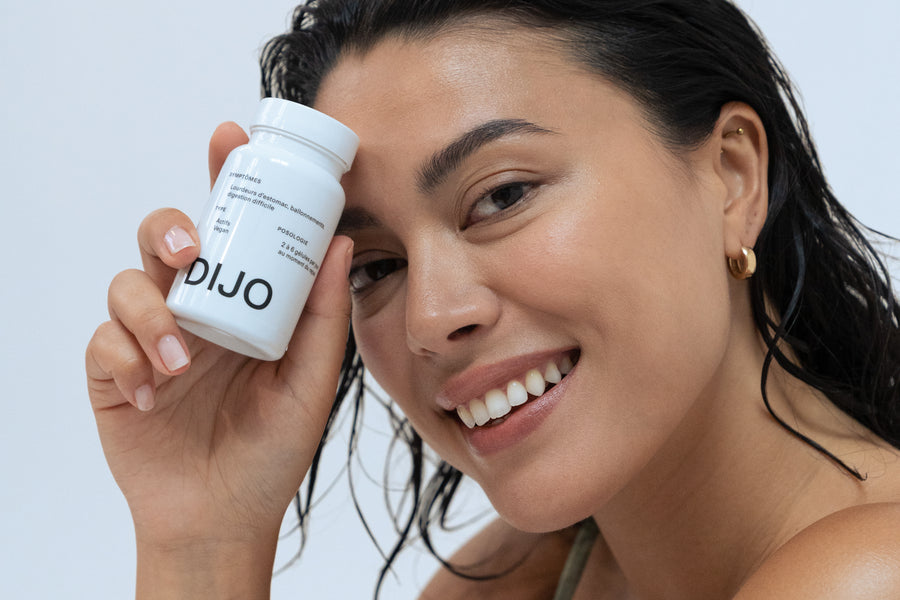The flora that make up the body are numerous. The most famous is the digestive flora composed of bacteria which live in our intestines and which are particularly talked about, particularly for their protective benefits.
However, their sisters, who populate the vagina, are the great forgotten ones! And yet they are of capital importance to guarantee vaginal well-being.
To maintain its balance, there are probiotics adapted to the vaginal flora. But how do they act? And which ones to choose? We tell you everything!
What you must remember :
- The balance of vaginal flora is essential in a woman's life to ensure good protection of the vagina.
- It evolves throughout life and according to different periods: puberty, periods, pregnancy, menopause and can sometimes be unbalanced.
- This flora being composed of good bacteria, it sometimes requires a supply of probiotics.
- It is recommended to take regular courses of vaginal flora probiotics to prevent imbalances in the event of mycosis or cystitis.
- Vaginal flora probiotics pass from the intestinal microbiota to the vagina to be deposited there.
What is vaginal flora?
As its name suggests, the vaginal flora, also called vaginal microbiota, is found inside the vagina. These are different microorganisms naturally present in it. The vagina is home to several billion bacteria. The figures are impressive: in an adult woman, it is estimated that each milliliter of vaginal secretions is made up of 100 million to 1 billion of these microorganisms!
As with the intestinal microbiota , healthy vaginal flora results from the perfect balance between the number of good and bad bacteria . If pathogenic bacteria are present in too large quantities, we then speak of an imbalance of the vaginal flora or dysbiosis .
The vaginal microbiota evolves throughout a woman's life and varies depending on lifestyle, hormonal changes and the composition of the intestinal microbiota.
In an adult woman , the vaginal flora is mainly composed of bacteria from the Lactobacillus family but also some bifidobacterium . You should know that each woman has her own vaginal microbiota, like the intestinal microbiota, thus harboring several types of Lactobacilli.
Evolution and influence of the vaginal flora throughout life
The intimate flora evolves over the course of life and according to different periods.
#1 – Puberty
During puberty, the vaginal flora will be created. Estrogens (hormones) will thicken the vaginal lining. The Lactobacilli from the rectum will then colonize this new environment favorable to their development.
#2 – Premenstrual syndrome
This phenomenon preceding the arrival of periods affects nearly 30 to 40% of women, more or less intensely. It can appear very close to the period and up to 14 days before. It manifests itself through different symptoms: fatigue, cravings, physical sensitivities (breast in particular), emotional imbalance, irritability, insomnia and digestive disorders , for the most common.
The vaginal pH gradually begins to change during this period and to become more basic, which unbalances the lactobacilli environment.
#3 – Rules
During periods, the pH of the blood (greater than 7) will increase that of the vagina (reduction in acidity), reducing the quantity of Lactobacilli, the defenders of this vaginal flora, leaving more room for various pathogenic agents such as Staphylococcus aureus. This can potentially lead to urinary tract infections called cystitis .
Apart from this, many digestive disorders can occur due to overactivation of the uterus, located right next to the colon.
#4 – Pregnancy
During pregnancy, many hormonal and metabolic changes take place. The future mother produces more hormones, progesterone and estrogen produced by the placenta, leading to a reduction in the number of Lactobacilli in the vaginal flora. This period can therefore potentially lead to the appearance of mycoses and more generally vaginosis.
It is important to remember that this vaginal flora allows, during a vaginal birth, to cover the baby with good bacteria and thus promote good colonization of his intestinal microbiota subsequently.
#5 – Menopause
During menopause , there is a gradual decrease in estrogen and therefore Lactobacilli. This also causes an imbalance in the vaginal flora and leads to an increased level of risk of developing mycoses and/or cystitis .
Hormonal variations and lifestyle can therefore lead to an imbalance in the intimate flora, thus favoring infections. It is therefore important to take care of it regularly and pamper this flora, just like the intestinal microbiota.
How to take care of your vaginal flora?
Taking care of your vaginal flora can be done in different natural ways .
Oral vaginal flora probiotics have a real influence on maintaining good vaginal health. Maybe you thought the two didn't communicate with each other? Well make no mistake, the intestinal and vaginal microbiota are intrinsically linked. Indeed, the intestine represents a storage place for Lactobacilli intended for the vagina. Thanks to a biofilm (a small community of microorganisms which forms the link between the bacteria of the intestine and those of the vagina), these bacteria pass from the anus to the vagina, via the perineum and the vulva. The vaginal microbiota is therefore composed of certain bacteria originating from the intestinal microbiota. The latter having a strong influence on the intimate flora, it is essential to take care and maintain the balance of this intestinal microbiota in order to prevent vaginal infections.
This is why oral vaginal flora probiotics act favorably on the vaginal microbiota, by providing good bacteria and inhibiting the growth of pathogenic bacteria. And these probiotics will above all help prevent fluctuations in the bacterial balance and therefore vaginal infections.
Vaginal flora probiotics such as Lactobacilli have different mechanisms of action:
- Further colonize the vaginal mucosa and thus prevent pathogenic bacteria from attaching and causing an infection
- Produce bacteriocin molecules, which kill pathogenic bacteria
- Decrease the pH of the medium to inhibit the growth of certain harmful bacteria
Take care of your vaginal flora with DIJO probiotics
At DIJO, we have created the Intimate Flora pack bringing together two probiotic treatments. The essential probiotics , to act on the intestinal flora and restore the microbial balance, thanks to its 8 strains of bacteria. It is recommended to carry out a treatment of two to 3 continuous months to feel deep and lasting effects, for prevention or when you feel the need. It is also entirely possible to take them continuously if you wish. And our probiotic vaginal flora helps strengthen the vaginal microbiota, thanks to its three specialized strains which are among the most abundant of this flora. The treatment is also to be taken over two to three months, in the event of repeated cystitis and/or mycosis, and to be repeated 4 times a year or when you feel the need.
Sources :
[1] Nappi RE, Palacios S, Panay N, Particco M, Krychman ML. Vulvar and vaginal atrophy in four European countries: evidence from the European REVIVE Survey. Climacteric. 2016 Apr;19(2):188-97. doi:10.3109/13697137.2015.1107039. Epub 2015 Nov 19. Erratum in: Climacteric. 2016 Apr;19(2):i. PMID: 26581580; PMCID: PMC4819825.
[2] Marion Marie. Interest of probiotics in the management of vaginal infections in the pharmacy. Pharmaceutical sciences. 2018. ffdumas-01962203f
[3] Palacios S, et al. Eur J Clin Microbiol Infect Dis. 2016 Oct;35(10):1701-8.
[4] Mendz GL. The Vaginal Microbiome during Pregnancy in Health and Disease. Applied Microbiology. 2023; 3(4):1302-1338. https://doi.org/10.3390/applmicrobiol3040089






















